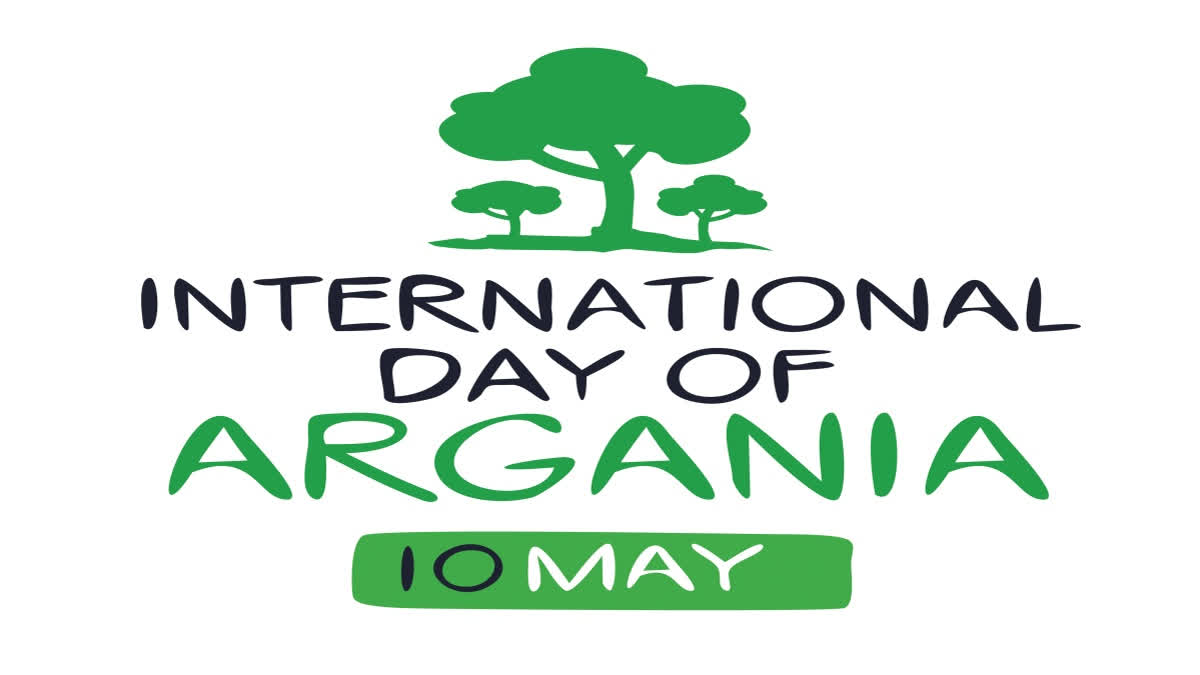Hyderabad: Every year on May 10, people worldwide celebrate the International Day of Argania. This special day celebrates the Argan tree, an ancient species that has grown in Morocco for about 80 million years. These trees are not just old; they play a crucial role in the local economy and environment. The celebration aims to increase awareness about these unique trees, their benefits, and the challenges they face.
The multifaceted Argan tree
The Argan tree is a native species of the sub-Saharan region of Morocco, in the southwest of the country, which grows in arid and semiarid areas. It’s the defining species of a woodland ecosystem, also known as Arganeraie, which is rich in endemic flora. It is resilient to a harsh environment under water scarcity, risk of erosion and poor soils.
This ecosystem of extraordinary beauty is not only important in terms of conservation, but also for research and socio-economic development, due to its forestry, agricultural and livestock use. The Argan tree woodlands provide forest products, fruits and fodder. The leaves and the fruits are edible and highly appreciated, as is the undergrowth, and constitute a vital fodder reserve for all herds, even in periods of drought.
The trees are also used as fuelwood for cooking and heating. The world-renowned Argan oil is extracted from the seeds and has multiple applications, especially in traditional and complementary medicine and in the culinary and cosmetic industries.
Background
This unique region, where Argan trees have been cultivated for centuries combines agricultural biodiversity, resilient ecosystems and valuable cultural heritage. For that reason, it has gotten recognition and protection from various United Nations entities. The United Nations Educational Scientific and Cultural Organization (UNESCO) designated in 1988 the endemic production area as the Arganeraie Biosphere Reserve.
Also, all know-how concerning the Argan tree was inscribed in 2014 on the UNESCO Representative List of the Intangible Cultural Heritage of Humanity. Moreover, in December 2018, FAO recognised the Argan-based agro-sylvo-pastoral system within the area of Ait Souab-Ait Mansour in Morocco as a Globally Important Agricultural Heritage System. And lastly, in 2021, the United Nations General Assembly proclaimed 10 May the International Day of Argania. The resolution, submitted by Morocco, was co-sponsored by 113 member states of the United Nations and adopted by consensus.
Interesting Facts About Argan Trees
- Morocco and the United Nations celebrates the International Day of Argania
- They are ancient: Argan trees are estimated to have grown on Earth around 80 million years ago
- It aims to highlight the Argan tree's role in community development and sustainability
- Farmers and cattle ranchers have been known to exploit Argan trees to use as firewood and feed camels and goats, but never plant any other trees back
- Argan oil is used by local women to counter the dryness in their skin caused by the Moroccan heat
- Tourists visit the Argan region every year to watch goats jumping on the tree branches to try and get a bite of Argan fruit
- Argan trees can reach up to 33 feet in height
- This celebration highlights Morocco's efforts to promote the Argan tree as a tree endemic to the Kingdom
- Argan trees hold a special place in Morocco and Moroccan culture, as the country is the world's main exporter of Argan-related products
- Morocco's annual Argan oil production is estimated to range from 4,000 to 6,000 tons.
- UNESCO added the Argan tree to the Representative List of Humanity's Intangible Cultural Heritage in 2014
How to Celebrate International Day of Argania
- Visit the Argan Region
- Social Media Campaigns
- Support Women’s Cooperatives
- Artistic and Photographic Exhibitions
- Try Argan Products
- Promote Sustainable Practices
Why International Day of Argania is Important?
- It raises awareness abut the Argan trees
- It puts Argan trees in the spotlight
- This day is important because it allows us to focus on this great plant
- It brings us together for a cause



